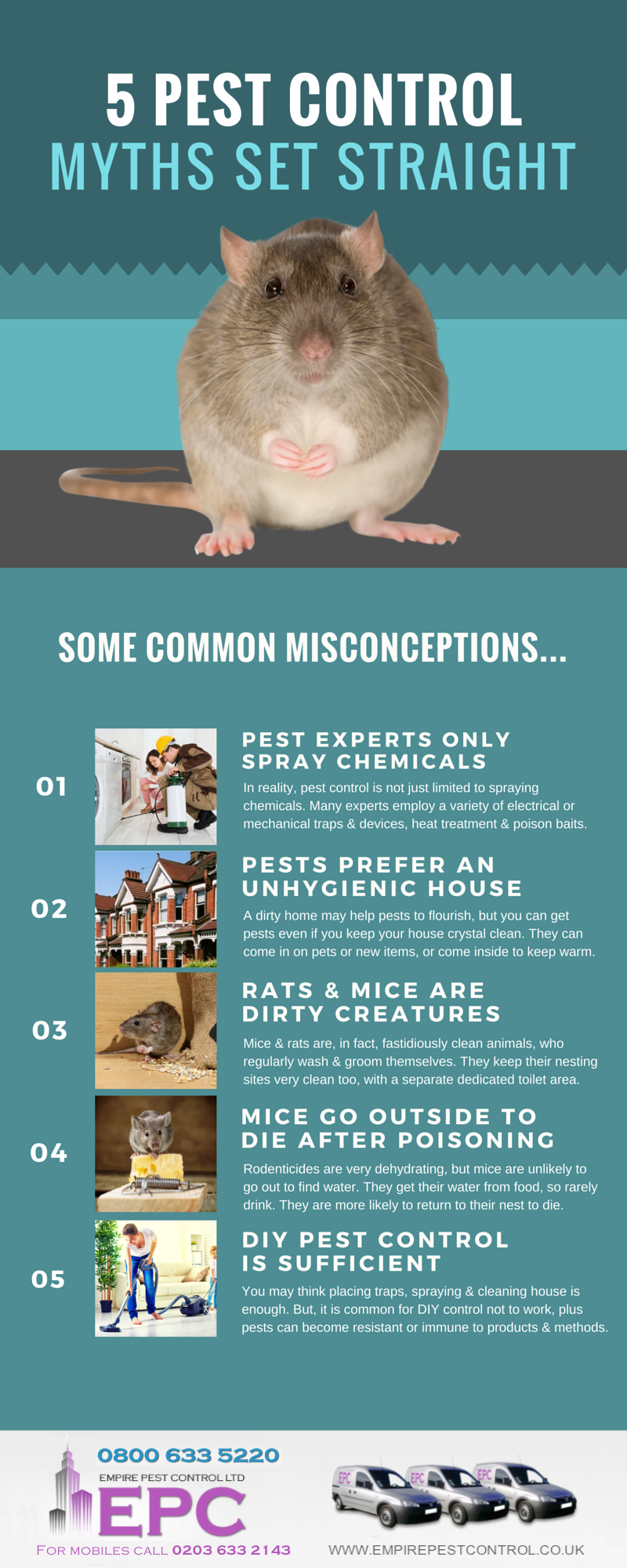Maintaining Rodents Away From Your Exterior Location: Methods To Have A Lawn Without Parasites
Maintaining Rodents Away From Your Exterior Location: Methods To Have A Lawn Without Parasites
Blog Article
Authored By-Nymand McDaniel
Did you understand that rats can press via openings as little as a quarter? Picture the implications for your exterior room. From munching on plants to nesting in relaxing corners, these parasites can create chaos if offered the opportunity. But fear not, there are practical strategies you can use to keep your lawn rodent-free. By taking straightforward actions to secure access factors and preserve a neat environment, you can create a citadel versus unwanted hairy site visitors. So, are you ready to protect your exterior place from these pesky trespassers?
Identify Entrance Details
To successfully rodent-proof your outside room, begin by pinpointing potential entry points. Evaluate your lawn for any voids or openings that rats could utilize to gain access. Check locations such as voids under doors, holes in the walls, or openings around energy infiltrations. Remember that https://www.cbsnews.com/boston/news/jane-newhouse-wildlife-rescue-chelmsford-massachusetts-it-happens-here-wbz-tv/ can press through holes as tiny as a penny, so be complete in your exam.
Concentrate on locations where utilities enter your home, such as where pipes, cable televisions, or cables enter the building. Seal https://howtoremovemoleratdisease06172.blogitright.com/27200548/observe-the-battle-in-between-a-historical-building-and-concealed-termite-risk-as-experts-reveal-groundbreaking-approaches-to-preserve-its-tradition around these access factors with products like steel woollen or caulk. Additionally, look for any kind of splits in the foundation or gaps in the home siding that might serve as entry factors for rats.
Pay attention to locations where plants meets your home, as thick plants can supply concealing areas and very easy gain access to for rats. Trim any kind of overhanging branches or shrubs that could be made use of as bridges to your home. By identifying and sealing these access points, you can substantially lower the opportunities of rodents invading your outdoor space.
Implement Exclusion Measures
Evaluating and sealing access points is the initial step in rodent-proofing your outdoor space; currently you'll take action by executing exclusion measures.
Start by installing door brushes up on all exterior doors to avoid rodents from pressing through spaces. Seal fractures and crevices with weather-resistant sealer, focusing on areas where utility pipelines enter your home.
just click the next website to cover vents and smokeshafts, ensuring they're securely attached. Cut tree branches and vegetation far from your home to remove potential bridges for rodents to access your roof covering.
In addition, consider mounting steel blinking around the base of your home to avoid burrowing. Store fire wood a minimum of 18 inches off the ground and far from your house.
Maintain trash in securely secured containers, and promptly tidy up any spilled birdseed or pet dog food. By executing these exclusion actions, you can significantly lower the possibility of rats attacking your outside room.
Maintain Cleanliness and Trimmed Landscape Design
Guarantee your outside room continues to be tidy and your landscaping is routinely cut to discourage rats from discovering harborage or food sources. Keeping your lawn clean is essential to minimizing destinations for rats. Remove any type of debris, mess, or unused items that can act as hiding spots for these parasites. Rats are attracted to areas with very easy accessibility to food and sanctuary, so by maintaining sanitation, you make your residential or commercial property less attractive to them.
Consistently cutting your landscape design is likewise important in rodent-proofing your outdoor area. Overgrown plants supplies rodents with ample hiding areas and prospective nesting sites. By keeping your turf mowed, bushes cut, and trees trimmed, you remove prospective environments for rats. Furthermore, cut landscaping makes it harder for rodents to access your home as they favor locations with sufficient insurance coverage for security.
Conclusion
Finally, by putting in the time to rodent-proof your exterior area, you can ensure a pest-free yard for many years to come. Remember to frequently inspect for access factors, carry out exemption actions, and maintain your backyard tidy and well-kept.
With these easy approaches in place, you can take pleasure in a peaceful and rodent-free outdoor environment. So, don't postpone - start rodent-proofing today and bid farewell to undesirable critters in your yard!
